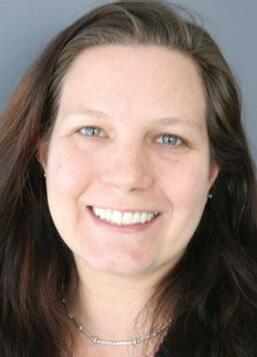
2 minute read
Denver welcomes migrants today, and yesterday
Why Denver and why now? We wondered as we watched in early December as the quiet arrival of migrants from our southern border increased suddenly and noticeably. We watched with worry as they arrived to our city and were greeted with bone-chilling temperatures, full shelters and a city government on its heels, working overtime to welcome them the best it could.
ese new rules will require thoughtful implementation and a clear focus on equity since the majority of stolen wages target people of color, immigrants, refugees, people with disabilities and other vulnerable populations. I’m running for auditor to bring this kind of forward-looking vision to the Denver Auditor’s O ce. Denver’s workers deserve leadership.
Erik Clarke is a manager at a large accounting rm focused on nancial advisory and strategy. He’s a candidate for Denver City Auditor in the upcoming municipal election.
LINDA SHAPLEY Publisher lshapley@coloradocommunitymedia.com
MICHAEL DE YOANNA
Editor-in-Chief michael@coloradocommunitymedia.com
CHRISTY STEADMAN
Editor csteadman@coloradocommunitymedia.com
LINDSAY NICOLETTI Operations/ Circulation Manager lnicoletti@coloradocommunitymedia.com
ERIN ADDENBROOKE Marketing Consultant eaddenbrooke@coloradocommunitymedia.com

AUDREY BROOKS Business Manager abrooks@coloradocommunitymedia.com
Councilmember
Robin Kniech
But Denver wasn’t the only city receiving men, women, families with children, people eeing violence, climate disruption and economic collapse abroad. And it wasn’t Denver’s rst time seeing a wave of cross-cultural migration. When life becomes untenable where you are, “somewhere else” becomes an answer — even at great cost and risk, without knowing what will come next.
We don’t have to look far back to see times when our city welcomed people taking such life-changing, risky journeys. History Colorado’s Colorado Encyclopedia chronicles Denver’s modern experience with these earlier eras:
· Waves of recruitment for immigrant labor largely drove waves of migration in the late 1800s into the early 1900s, including eastern European Jewish communities that formed in several neighborhoods of Denver.
Columnist opinions are not necessarily those of Life in Cap Hill. We welcome letters to the editor. Please include your full name, address and the best number to reach you by telephone.
Email letters to csteadman@coloradocommunitymedia.com
Deadline 5 p.m. on the 20th of each month for the following month’s paper.
· e Great Migration from 1910-20s brought Black residents from southern states to Denver. Our response was not a welcoming one, with the rise of the Ku Klux Klan among Denver’s political leadership.
· Many Japanese Americans were forced from their West Coast homes into internment camps — more than 2,000 — then relocated to Denver from 1942-1944.
· Racially restrictive covenants meant that more than 75% of Denver’s Black residents lived in Five Points by 1929, the World-War II era brought another wave of newcomers and Five Points’ Black population doubled by 1950 with former servicemembers and others.
Housing crunch? Denver had one in the post-war era, too. Concerns about language barriers and cultural di erences? Europeans didn’t speak English when they came to build railroads or work in meat packing plants. City resources? Denver’s funds are not unlimited, but surely the city’s economic success of recent years puts us in one of the strongest positions we’ve ever been in. What about jobs and our economy? Today, we have a relatively low unemployment rate, and employers in construction, restaurants and other elds are still looking to









